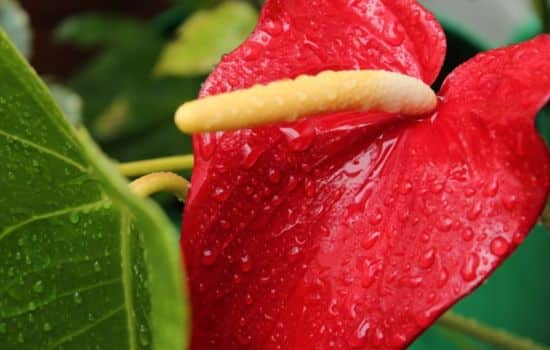Have you ever stumbled upon a dazzling flower while on a walk and wondered what its name was? Or have you received a new plant for your home and have no idea how to care for it? Knowing how to use the best plant identification apps is like having a personal botanist in your pocket, ready to unlock the secrets of the green world around you with a single click. This comprehensive guide will introduce you to the most accurate and easy-to-use tools to transform your curiosity into knowledge.
Our relationship with nature has changed. The quest for a greener home and more time outdoors has led many of us to become “plant parents.” A recent study by Garden Media Group noted a significant increase in the number of young people interested in gardening, reflecting a desire for well-being and connection. However, with this passion comes questions: “What plant is this?”, “Does it like sun or shade?”, “Is it safe for my dog?” It is precisely to answer these questions that technology has developed apps to identify plants, incredible tools that use artificial intelligence to analyze a photo and provide a wealth of information in seconds. This article is your ultimate guide to navigating these options and choosing the one that best suits your needs.
Magic in the Palm of Your Hand: How Do These Apps Work?
It may seem like magic, but the technology behind these apps is a fascinating combination of artificial intelligence (AI) and citizen science. When you take a photo of a leaf, flower, or fruit, the app compares it to a massive database containing millions of images already cataloged by botanists, scientists, and other users.
The AI image recognition algorithm analyzes patterns, shapes, colors, and textures to find the most likely matches. The more people use the app and contribute photos, the smarter and more accurate it becomes. It's the perfect combination of cutting-edge technology and the collective knowledge of nature lovers.
The Best Apps for Identifying Plants (Complete Analysis of 2025)
We've tested and reviewed the top options available to you.
1. PictureThis: The Botanical Encyclopedia in Your Pocket
PictureThis is arguably the most popular and powerful app in its category. Its accuracy is acclaimed by millions of users. With a clean interface and many features, it goes far beyond just saying the plant's name.
- Essential Functions:
- Fast and Accurate Identification: Recognizes thousands of species with an impressive success rate.
- Diagnosis of Diseases: Take a photo of a diseased leaf and the app suggests the cause and possible treatments.
- Care Guides: Provides detailed information about the amount of water, sunlight, and soil type your plant needs.
- Watering Reminders: Allows you to set alerts so you don't forget to take care of your plants.
- Ideal for: Dedicated plant parents and anyone who wants a comprehensive diagnosis and care guide.
<strong>Note:</strong>It offers a limited free version and a premium subscription for full access.- Intuitive Download:
2. PlantNet: The Science-Based Collaborative App
PlantNet is different: it's a citizen science project developed by a consortium of French research institutes. The goal is not only to help you, but also to collect data so scientists can study plant biodiversity. By using it, you become a scientific contributor.
- Essential Functions:
- Focus on Wild Plants: It is especially powerful for identifying the flora of different regions of the world.
- Identification by Parts: You can send photos of leaves, flowers, fruits, or even the stem to help the system.
- Active Community: The results are compared and validated by the community.
- Totally Free: There are no costs or subscriptions.
- Ideal for: Hiking enthusiasts, travelers, biology students, and those who enjoy contributing to scientific projects.
- Intuitive Download:
3. Google Lens: The Universal Tool You Already Have
Many people don't know this, but the ability to identify plants is already integrated into many Android phones through Google Lens. It's part of the Google Camera app and uses the full power of Google Search to find results.
- How It Works: Open Google Lens (or the "Lens" icon on your camera), point it at the plant, and take a photo. It will visually search the internet and present the most likely results, usually with links to Wikipedia and other sites.
- Essential Functions:
- Extremely Accessible: It's already on your phone, no need to download anything new.
- Multifunctional: In addition to plants, Lens can identify objects, translate text, and much more.
- Integrated with Google Search: Provides a wide range of contextual information.
- Ideal for: Casual users who need quick identification without delving into care guides or diagnoses.
- The most economical cars in the world
- The Best Apps to Measure Your Stress Level
- Games to Be the King of the Party
Beyond the Name: What to Do with the Information?
Knowing your plant is a “Monstera deliciosa” is just the beginning.
Care and Cultivation: Transforming Information into Action
Use the information from the apps to create the perfect environment for your plants. Check their light needs, watering frequency, and whether they need any fertilizer. Apps like PictureThis are a complete guide to keeping your urban jungle healthy.
Safety First: Identifying Toxic Plants
This is one of the most important uses of these apps. If you have small children or pets, it's crucial to know if a new plant is poisonous. While walking in the park, you can teach your children not to touch plants that the app identifies as dangerous, such as the Dieffenbachia (Dieffenbachia seguine).
Teacher Tips for Perfect Identification
For best results, follow these tips:
- Focus on one part: Don't try to frame the entire plant. Take a clear photo of a leaf or flower.
- Use a neutral background: If possible, place a sheet of paper or a smooth cloth behind the leaf you are photographing.
- Capture the details: If the plant has flowers and fruit, photograph them as well. They're crucial for identification.
- Avoid shadows and excessive light: Good lighting, without reflections, guarantees a better quality photo for AI analysis.
Conclusion:
The apps to identify plants They are more than just tools; they are bridges to a greater understanding and appreciation of the natural world. They empower us to take better care of our homes, to explore the world with greater knowledge, and to ensure the safety of our families. Download one of the options, point your camera at the nearest leaf, and rediscover the magic growing all around you.


